Overview
The article titled "10 Alarming Statistics on the Percentage of Americans with Type 2 Diabetes" sheds light on a pressing health issue that affects many individuals and families across the nation. With over 37 million Americans impacted, it’s startling to learn that 1 in 5 adults remain undiagnosed. This condition is especially prevalent among Hispanic and Black adults, highlighting an urgent call for effective management and public health initiatives.
It's understandable to feel overwhelmed by these statistics. They serve as a reminder of the importance of awareness and proactive health measures. As we navigate this growing epidemic together, it’s crucial to seek support and resources that can help us manage our health effectively. Remember, you are not alone in this journey. We are here to support you every step of the way.
Introduction
Recent data reveals a staggering trend: over 37 million Americans are grappling with Type 2 Diabetes, a figure that equates to approximately 11.3% of the population. This alarming statistic not only highlights the scope of a growing epidemic but also underscores the urgent need for effective management and awareness strategies.
It's understandable to feel overwhelmed by such numbers. As the complexities surrounding this condition deepen, a pressing question arises: how can individuals and communities combat the rising tide of Type 2 Diabetes and its associated health risks?
Exploring this topic unveils critical insights into prevention, management, and the resources available to support those affected. You're not alone in this journey, and together, we can navigate these challenges.
T2DSolutions: Your Comprehensive Resource for Type 2 Diabetes Management
At T2DSolutions, we empower individuals and families affected by Type 2 Diabetes through a comprehensive platform that offers extensive education and resources. You can access personalized information on administration strategies, dietary plans, exercise routines, and the latest medical research, ensuring you have the necessary tools for effective blood sugar management. Our focus on both Type 2 and Type 3 conditions addresses the complexities of living with these illnesses, making it an essential resource for patients and healthcare professionals alike.
Recent studies show that effective education on blood sugar management can significantly improve patient outcomes. Mobile phone interventions, in particular, lead to notable enhancements in glycemic control and self-management. For instance, a meta-analysis of 22 intervention studies revealed that these digital tools can foster improved well-being behaviors, including adherence to dietary guidelines and medication management.
T2DSolutions exemplifies successful management strategies for diabetes by providing a wealth of resources tailored to diverse needs. Personal stories from individuals like Randy Jackson and Halle Berry highlight how lifestyle changes and education can lead to better health outcomes. Randy's journey emphasizes the importance of behavior modification, while Halle shares how managing blood sugar levels has positively impacted her overall quality of life.
By nurturing a supportive community and offering expert knowledge, T2DSolutions not only enhances the management of diabetes but also encourages a better quality of life for its users. This holistic approach reinforces the belief that effective management of blood sugar conditions is a shared journey, enriched by collective knowledge and resources. Remember, you're not alone in this journey; we are here to support you every step of the way.
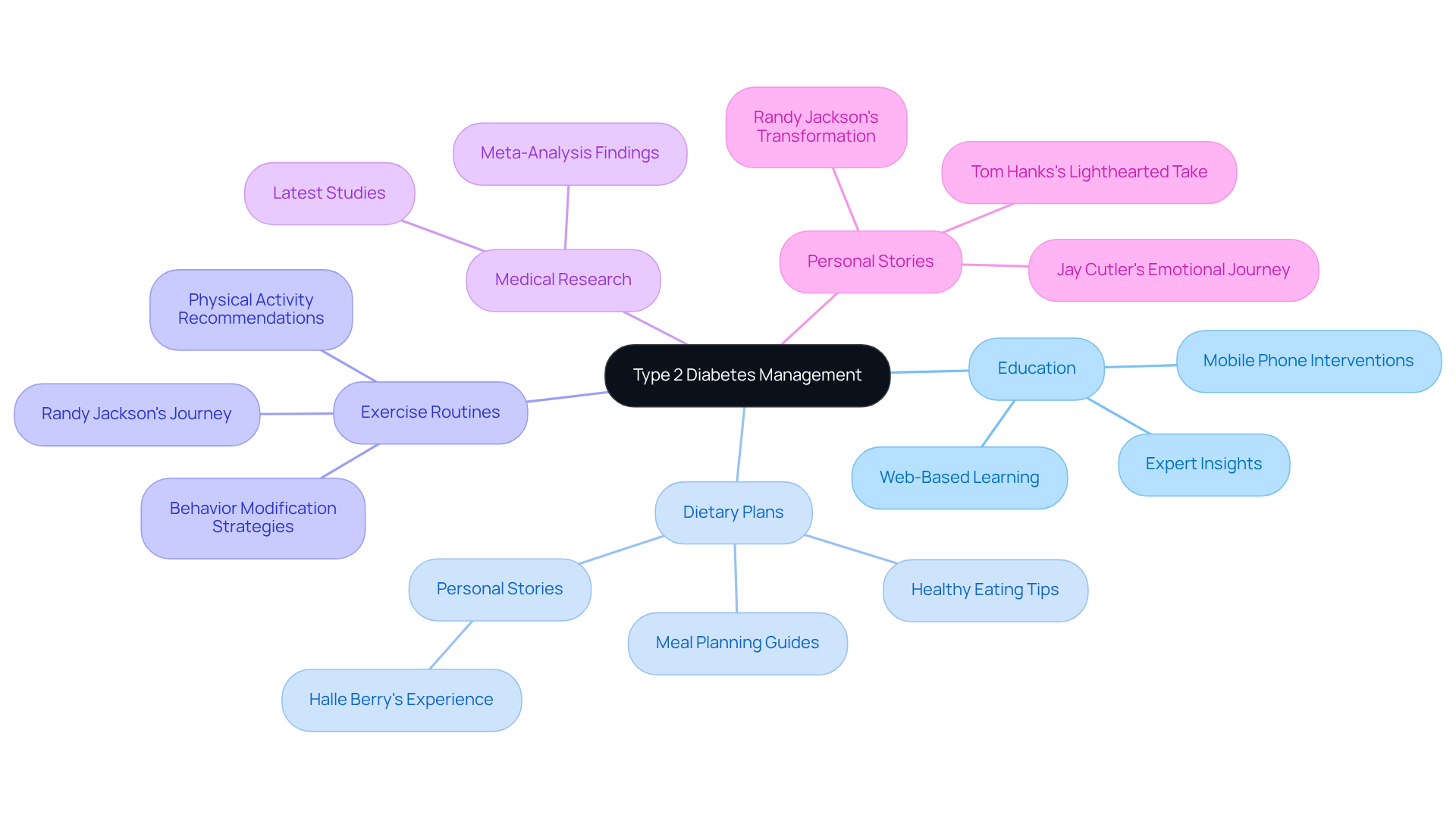
Over 34 Million Americans Have Type 2 Diabetes: A National Epidemic
Recent statistics reveal that over 37 million Americans are currently living with Type 2 Diabetes, which corresponds to a percentage of Americans with Type 2 Diabetes of approximately 11.3% of the U.S. population. It’s concerning to note that around 8.6 million individuals are affected by this condition but have not yet received a diagnosis. This astonishing figure underscores the urgent need for effective management tactics and strong public wellness initiatives to address this growing epidemic.
The increasing occurrence of Type 2 Diabetes, which accounted for the seventh leading cause of death in the U.S. in 2017, underscores the importance of addressing the percentage of Americans with type 2 diabetes through enhanced awareness, prevention, and treatment options nationwide. Complications such as heart disease, vision impairment, and kidney disease further highlight the urgency of addressing this public health crisis.
Community programs that emphasize education and support have shown promise in reducing health issues related to blood sugar. It’s important to recognize that these initiatives not only provide information but also foster a sense of belonging and understanding among those affected. Remember, you’re not alone in this journey, and together, we can make a difference in combating this epidemic.
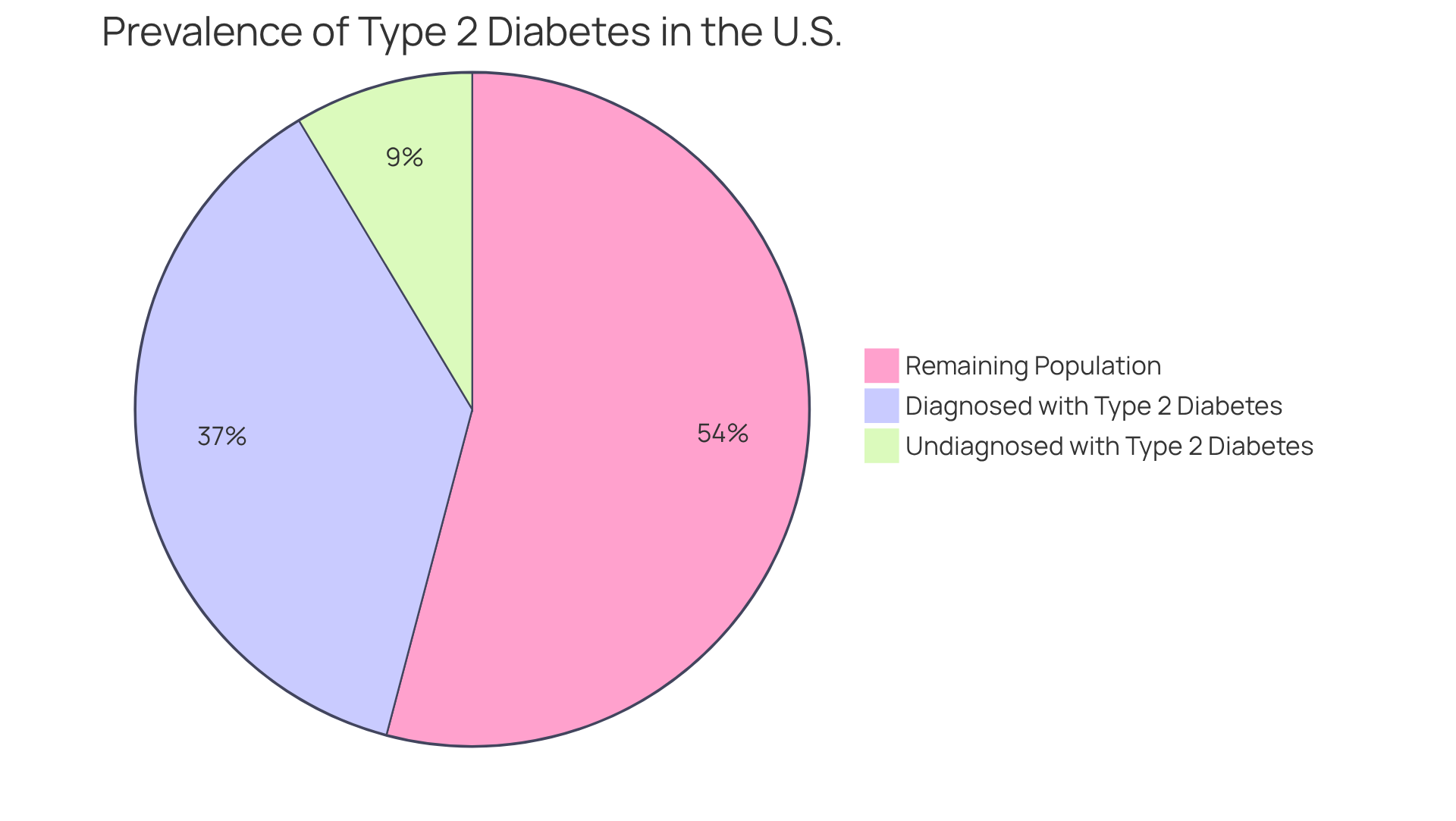
Type 2 Diabetes Rates Among Youth Increased by 95% in the Last Decade
In the past decade, the incidence of Type 2 Diabetes among youth has surged by an astonishing 95%. This rise is especially troubling, as it signifies a change in the demographics of a condition traditionally observed in older adults. Factors contributing to this rise include increased obesity rates, with nearly 47.1% of U.S. adults diagnosed with the condition reflecting the percentage of Americans with type 2 diabetes, as well as sedentary lifestyles and poor dietary habits.
It's particularly alarming that rates of this second type of blood sugar condition in U.S. youth increased 62% following the onset of the COVID-19 pandemic, disproportionately impacting Black and Hispanic children. Tackling this problem necessitates thorough education and preventive strategies designed for younger groups. After all, around 352,000 Americans under 20 are diagnosed with this condition.
As health experts have noted, "The rising rates of obesity among children are a critical factor in the increasing prevalence of Type 2 Diabetes, necessitating urgent action to promote healthier lifestyles." You're not alone in this journey, and together, we can work towards healthier futures for our youth.
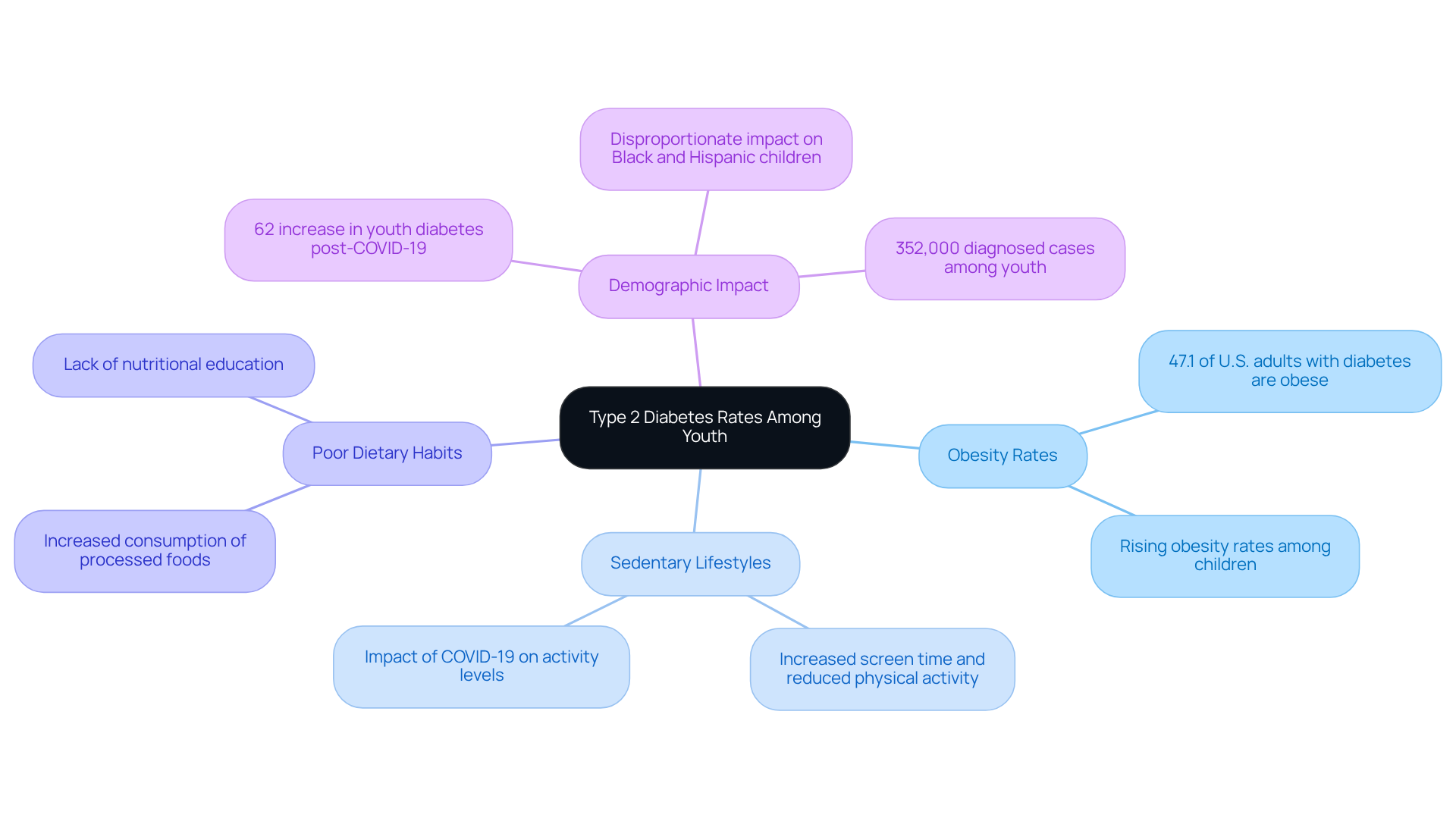
$327 Billion: The Annual Cost of Diabetes in the United States
The financial burden of diabetes in the United States is staggering, with an estimated annual cost of $327 billion. This figure encompasses direct medical expenses, lost productivity, and other related costs, illustrating the extensive economic challenges faced by individuals and the healthcare system. Direct costs include medications, monitoring supplies, and healthcare services, while indirect costs account for productivity losses, which alone total approximately $106.3 billion annually, along with caregiver burdens. As the incidence of diabetes continues to rise, effective management and prevention strategies become increasingly crucial.
It's understandable to feel overwhelmed by these numbers. Research suggests that lowering the incidence of diabetes could greatly ease financial pressure, highlighting the necessity for unified efforts across sectors to tackle this urgent matter. Moreover, health condition prevention programs have shown promise in reducing costs, demonstrating that proactive measures can lead to substantial savings in healthcare expenditures.
Significantly, data indicates that 30-60% of individuals with diabetes-related issues experience financial toxicity. This emphasizes the critical necessity for accessible resources and support for those managing this complex condition. T2DSolutions strives to be a valuable resource for individuals impacted by diabetes, offering education and community support to assist in managing the condition effectively.
Remember, the economic impact of diabetes management is not just a personal concern; it affects families and communities. You're not alone in this journey, and comprehensive support systems are essential. We are here to support you every step of the way.
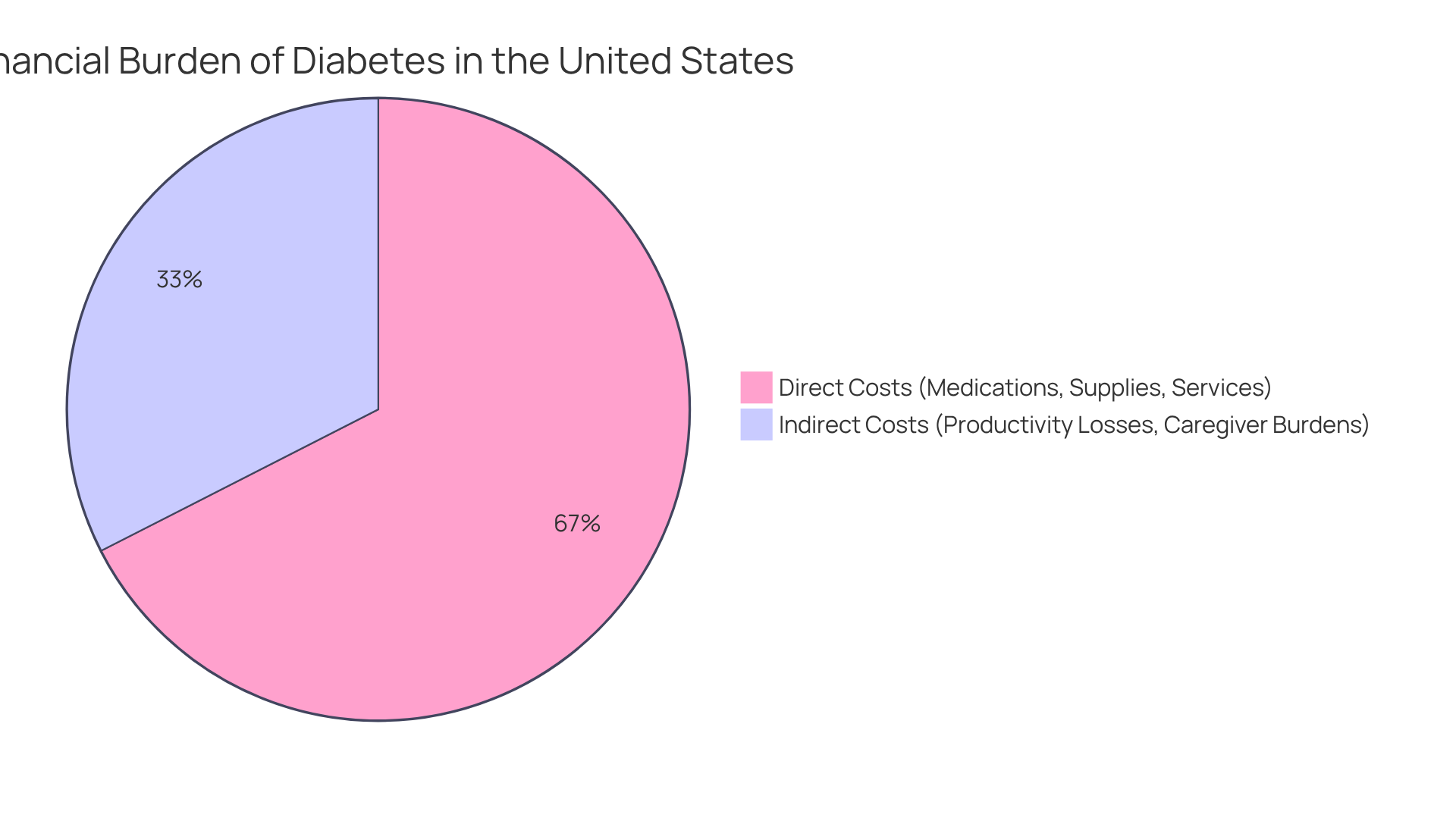
Hispanic and Black Adults Face Higher Rates of Type 2 Diabetes: A Call for Action
Hispanic and Black adults face disproportionately high rates of Type 2 Diabetes, contributing to the overall percentage of Americans with Type 2 diabetes, which includes 12.1% of non-Hispanic Black adults and 11.7% of Hispanic adults diagnosed with the condition. This stark contrast to the 6.9% prevalence among non-Hispanic White adults highlights the significant disparities in well-being influenced by socioeconomic factors, access to medical services, and cultural health practices. It's understandable to feel concerned about these numbers, as research shows that 40-60% of disparities in blood sugar conditions may be linked to socioeconomic status. This emphasizes the necessity for focused public welfare strategies.
To address these disparities, outreach initiatives must involve these communities, ensuring they obtain the essential education and resources for effective management of their condition. Successful initiatives, such as culturally sensitive education programs, have shown enhanced health outcomes. This highlights the urgent need for collective action to tackle these disparities in medical care. You're not alone in this journey; there are resources available to support you.
For more resources, T2DSolutions offers educational materials tailored to the unique needs of these populations. We encourage newly diagnosed patients to explore T2DSolutions for comprehensive support and information on managing their condition effectively. Remember, we are here to support you every step of the way.
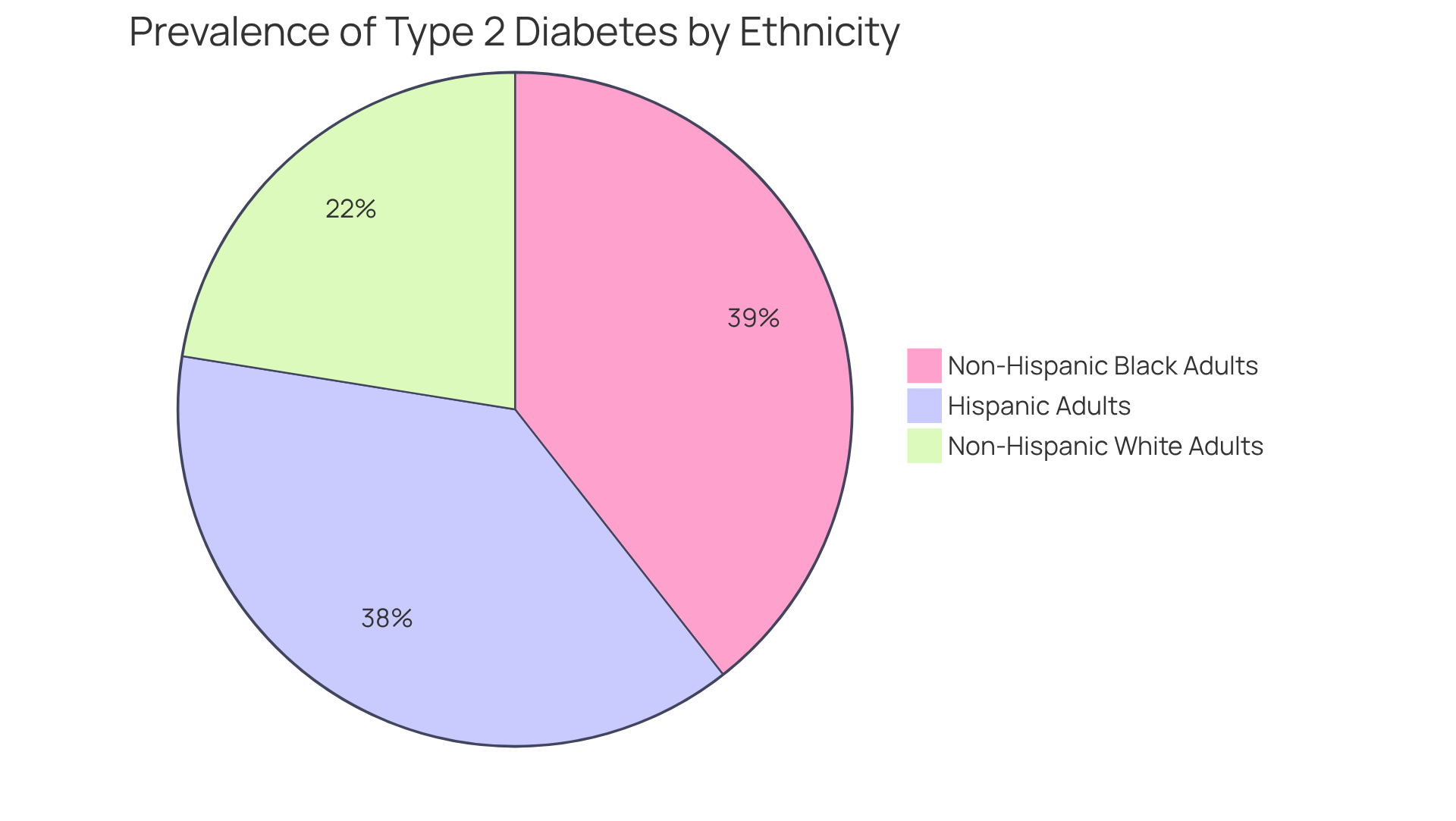
Nearly 90% of Adults with Type 2 Diabetes Are Overweight or Obese
It's concerning to note that 90% of adults identified with this condition fall into the overweight or obese category. This statistic highlights the essential connection between weight control and the prevention of diabetes, particularly in light of the percentage of Americans with type 2 diabetes. Understanding this significant correlation emphasizes the necessity for effective weight management strategies to reduce the risk and ultimately lower the percentage of Americans with type 2 diabetes. Research shows that obesity accounts for 43% of Type 2 Diabetes cases globally, which relates to the percentage of Americans with Type 2 Diabetes, making it a significant and modifiable risk factor for its development and progression.
Implementing a balanced diet and increasing physical activity can lead to substantial improvements in health outcomes for those affected. At T2DSolutions, we offer vital resources, including dietary plans and workout routines, to assist individuals in adapting to these lifestyle changes. We encourage you to adopt a proactive approach to managing your health. As Fahad Abdullah Saeed Al Jarad wisely states, "Obesity is a substantial and changeable risk element for the onset and advancement of type 2 sugar disease."
Additionally, the prevalence of obesity and overweight among participants was found to be 85.8%. This further emphasizes the critical need for targeted interventions. Remember, you're not alone in this journey. We are here to support you every step of the way.
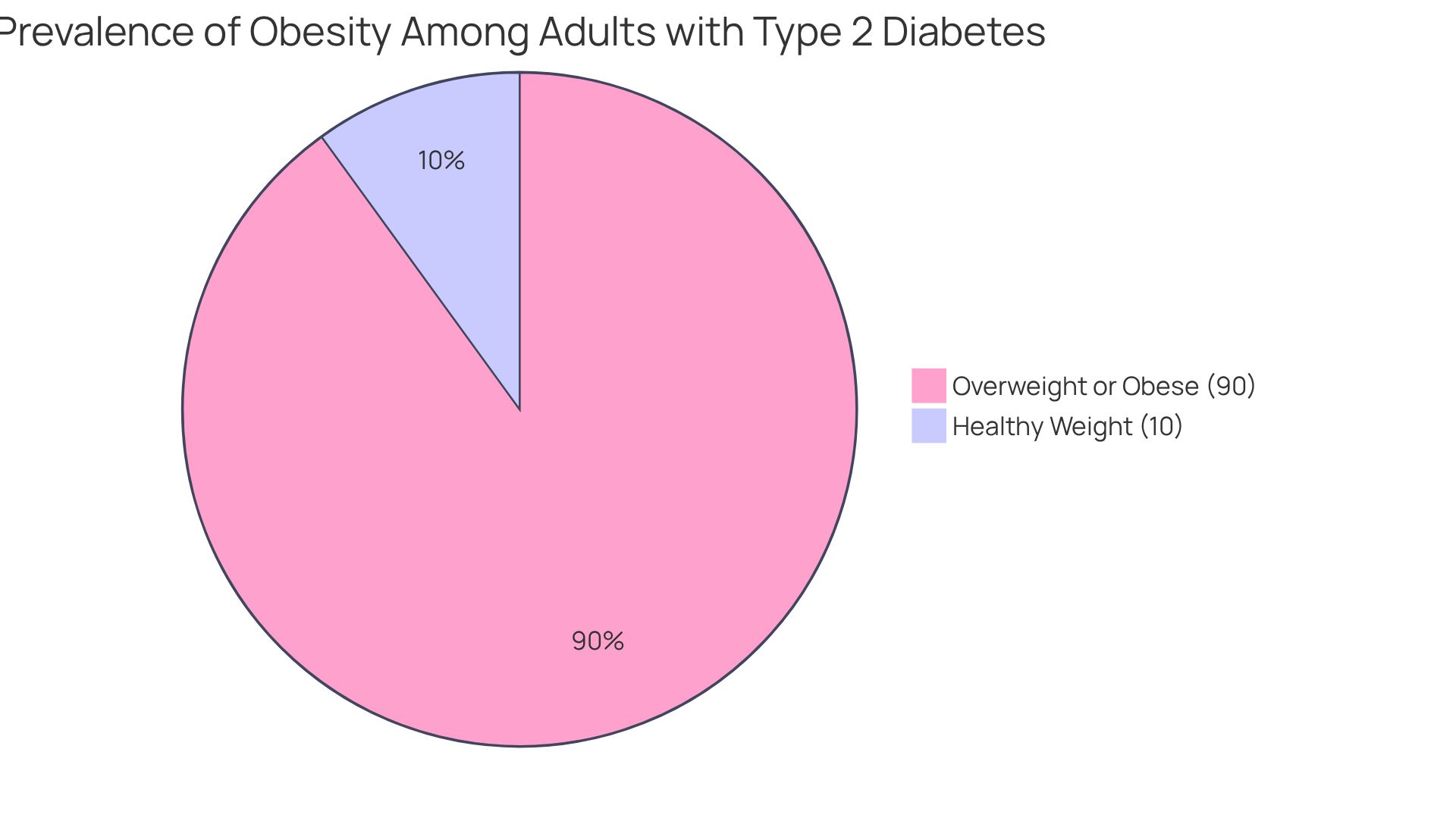
Type 2 Diabetes Increases Risk of Heart Disease by 2 to 4 Times
If you have Type 2 diabetes, it’s important to know that you may face a significantly elevated risk of developing heart disease. Studies show that individuals with this condition are 2 to 4 times more likely to encounter heart-related issues compared to those without it. This increased risk highlights the importance of managing your blood sugar levels carefully, which includes regular monitoring of your cardiovascular health.
We understand that this can be overwhelming, but you’re not alone in this journey. At T2DSolutions, we offer compassionate guidance on how to manage your blood sugar levels effectively. By taking proactive steps, you can reduce the risk of heart complications and feel more in control of your health.
Remember, it’s okay to seek support. We are here to help you every step of the way, ensuring you have the resources and information you need to navigate this challenge.
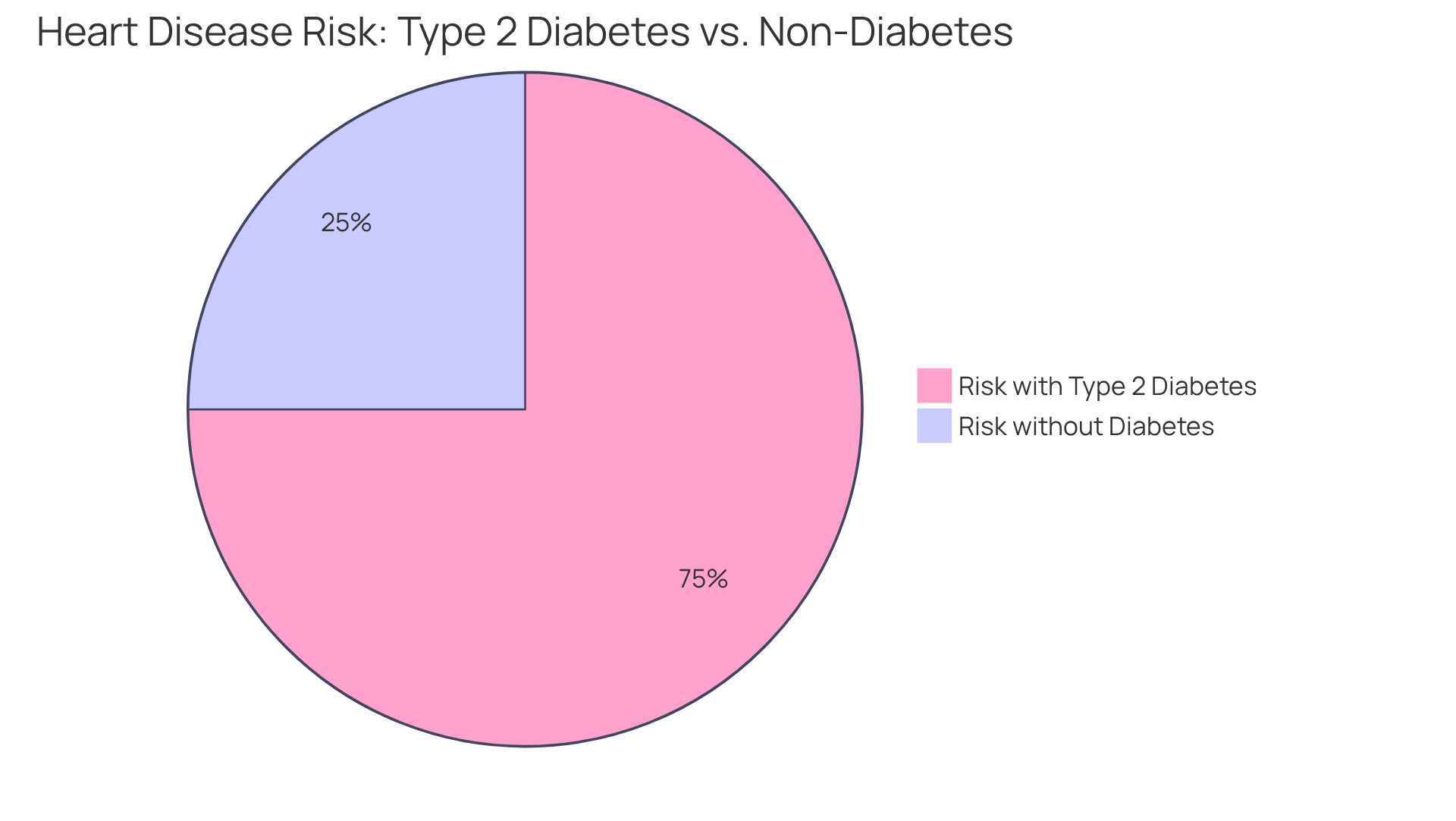
1 in 5 Adults with Diabetes Are Undiagnosed: The Importance of Screening
Did you know that about 1 in 5 adults with diabetes remain undiagnosed? This can pose significant risks to your well-being. It's understandable to feel concerned about this, but timely identification is crucial. It can help manage diabetes effectively and prevent serious complications from developing.
At T2DSolutions, we care deeply about your health. We advocate for regular screenings and provide valuable resources to help you understand your risk factors and the importance of early diagnosis. You're not alone in this journey; we are here to support you every step of the way.
To assist you, T2DSolutions offers educational materials and practical tips. Consider:
- Scheduling regular check-ups
- Utilizing online risk assessment tools
These steps can empower you to take charge of your health and ensure you are informed about your condition. Remember, seeking help is a sign of strength, and we are here to guide you through this process.
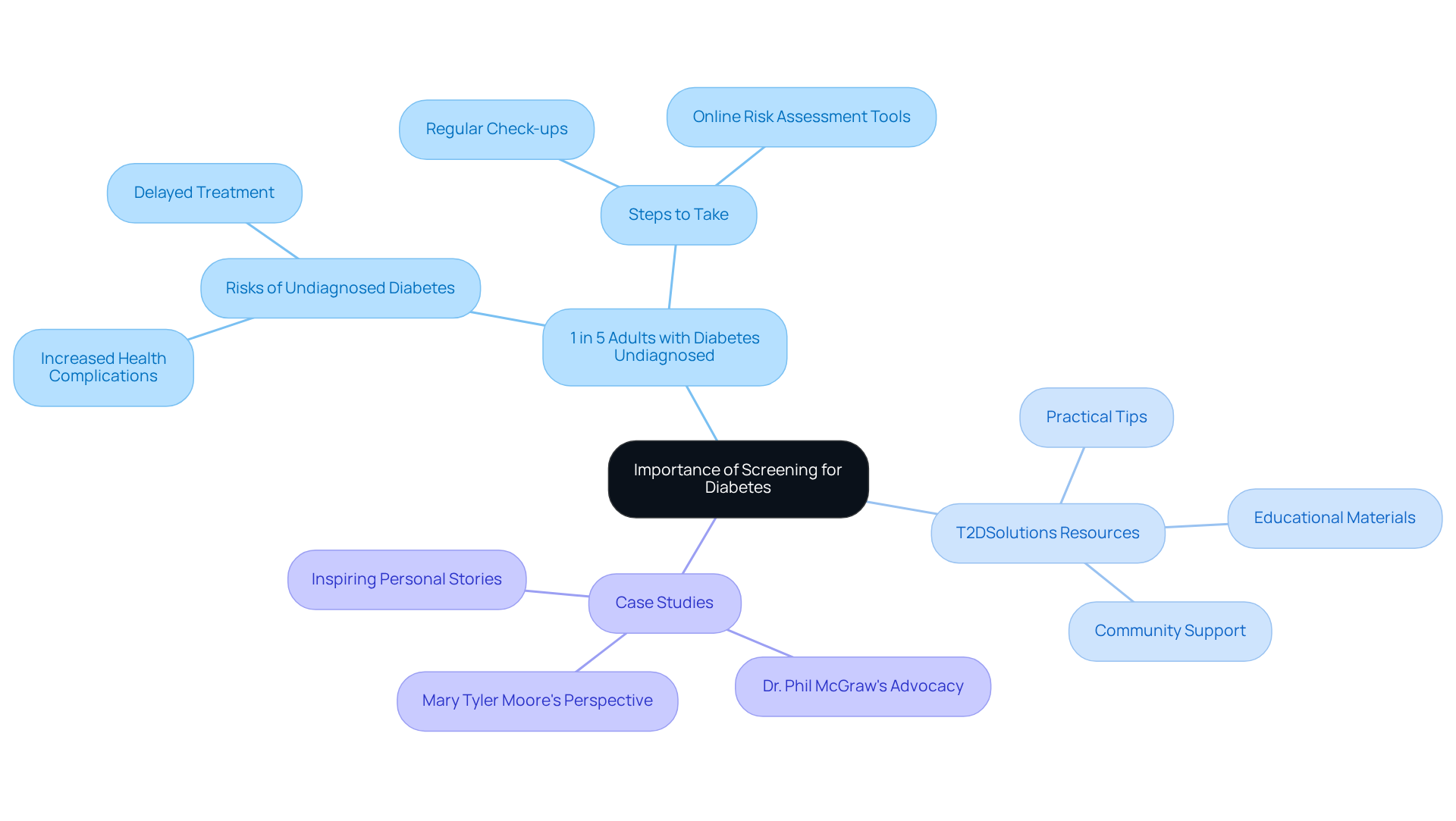
Type 2 Diabetes Can Shorten Life Expectancy by Up to 10 Years
Studies indicate that Diabetes 2 can reduce life expectancy by up to 10 years. This highlights the critical necessity for effective control strategies. It's understandable to feel overwhelmed by this information, but remember, there is hope. This significant reduction in longevity emphasizes the importance of lifestyle modifications. By adhering to treatment plans, maintaining a balanced diet, and engaging in regular physical activity, you can enhance your quality of life and potentially extend your lifespan.
At T2DSolutions, we are dedicated to empowering you with comprehensive resources. We offer:
- Dietary plans
- Exercise routines
- Expert insights to support effective diabetes management
You're not alone in this journey; we are here to support you every step of the way. Together, we can promote healthier living and help you take control of your health.
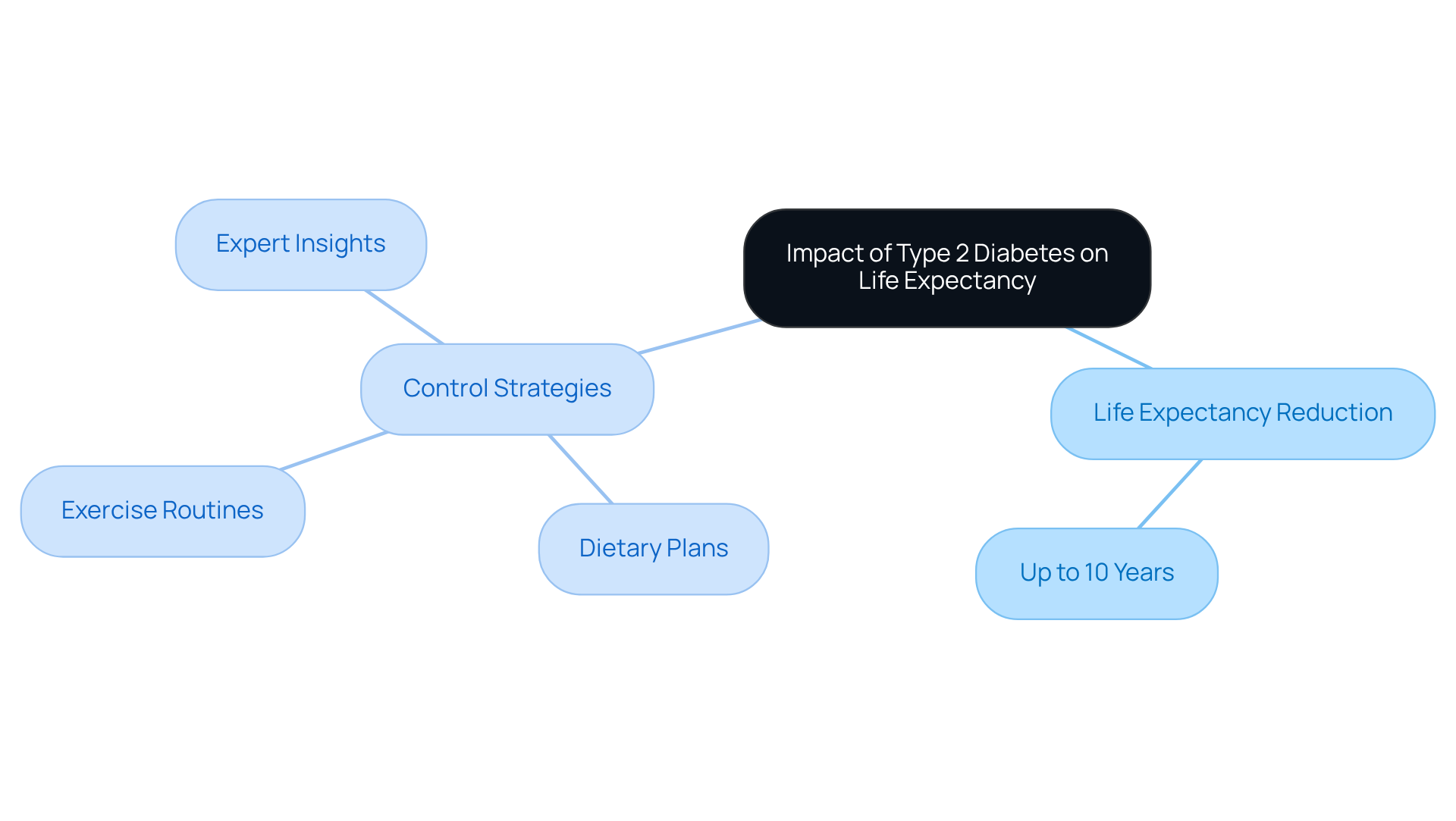
Type 2 Diabetes Diagnoses in Children Have Tripled Since 2000
Since the year 2000, diagnoses of Type 2 Diabetes in children have tripled. This troubling trend in pediatric health is largely due to rising obesity rates and sedentary lifestyles among our youth. It’s understandable to feel concerned about this issue, but addressing it requires comprehensive education and preventive measures tailored specifically for younger populations.
At T2DSolutions, we are committed to providing resources that empower families to make healthier choices. You're not alone in this journey; together, we can combat this alarming trend. By taking proactive steps and seeking support, we can create a healthier future for our children.
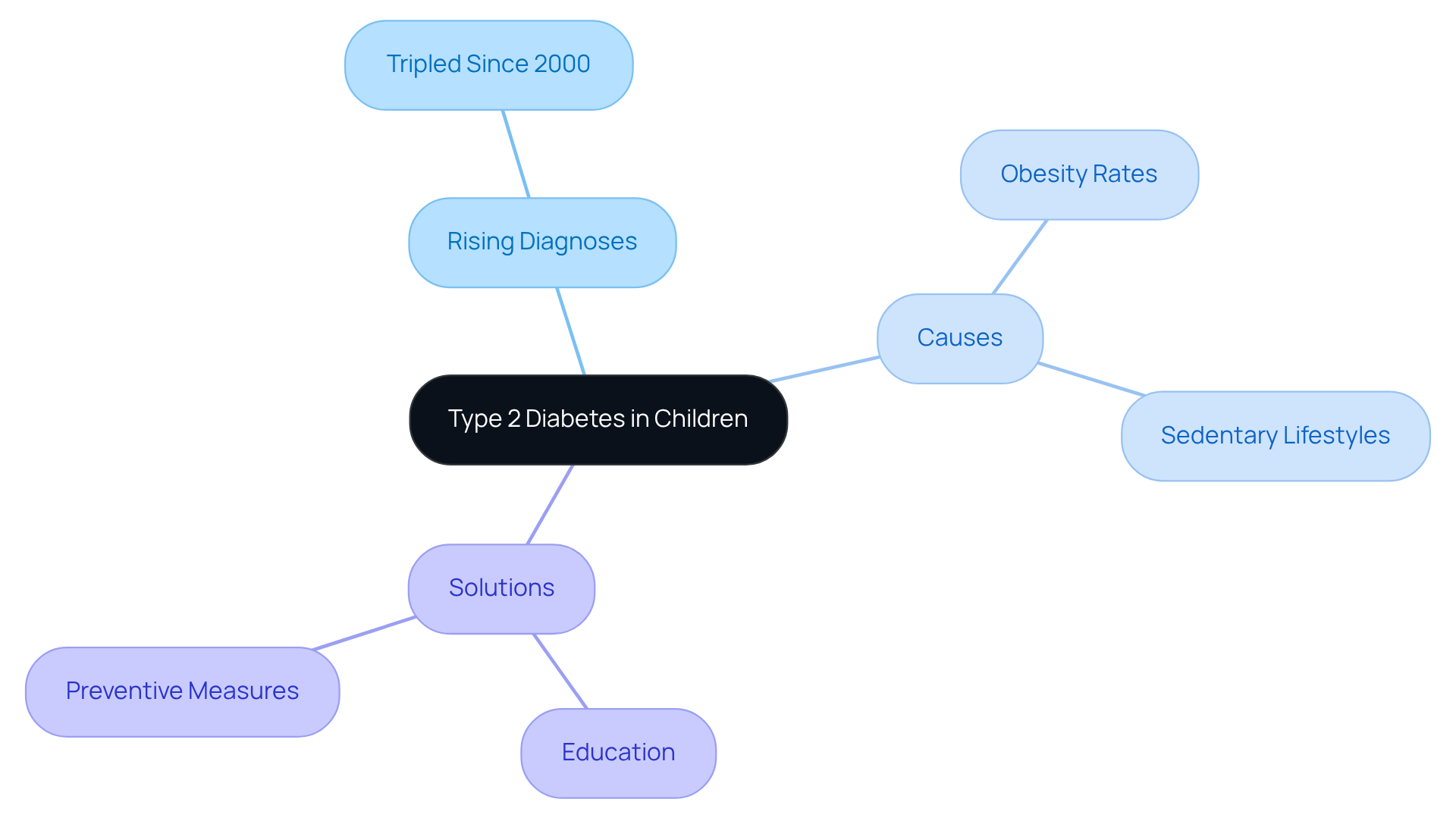
Conclusion
The alarming statistics surrounding Type 2 Diabetes in America illustrate a critical public health crisis that cannot be ignored. With over 37 million individuals affected, it is evident that urgent action is required to manage and prevent this condition effectively. These statistics not only highlight the prevalence of the disease but also underscore the need for comprehensive resources and education to empower those impacted.
Throughout the article, key insights reveal the multifaceted nature of Type 2 Diabetes. From the concerning rise in diagnoses among youth to the staggering economic burden of $327 billion annually, the implications are far-reaching. It’s understandable to feel overwhelmed by these numbers. Disparities in prevalence among different ethnic groups further emphasize the necessity for targeted outreach and support programs. Moreover, the connection between obesity and Type 2 Diabetes highlights the importance of lifestyle changes, while the increased risk of heart disease serves as a stark reminder of the health complications associated with this condition.
As these statistics paint a sobering picture, it is crucial to recognize that collective action can lead to meaningful change. By prioritizing education, community support, and proactive health management, individuals can take significant steps toward a healthier future. The journey may be challenging, but with resources like T2DSolutions and a commitment to better health, there is hope for overcoming the Type 2 Diabetes epidemic. Together, a concerted effort can make a profound difference in the lives of millions, ensuring that no one has to face this journey alone. Remember, you're not alone in this journey; we are here to support you every step of the way.
Frequently Asked Questions
What is T2DSolutions?
T2DSolutions is a comprehensive platform that empowers individuals and families affected by Type 2 Diabetes through extensive education and resources, including personalized information on administration strategies, dietary plans, exercise routines, and the latest medical research.
How does T2DSolutions support diabetes management?
T2DSolutions supports diabetes management by providing a wealth of resources tailored to diverse needs, fostering a supportive community, and offering expert knowledge to enhance blood sugar management and improve quality of life.
What recent studies highlight the importance of education in diabetes management?
Recent studies show that effective education on blood sugar management can significantly improve patient outcomes, with mobile phone interventions leading to notable enhancements in glycemic control and self-management.
How prevalent is Type 2 Diabetes in the United States?
Over 37 million Americans are currently living with Type 2 Diabetes, which represents approximately 11.3% of the U.S. population. Additionally, around 8.6 million individuals are affected but have not yet received a diagnosis.
What are some complications associated with Type 2 Diabetes?
Complications associated with Type 2 Diabetes include heart disease, vision impairment, and kidney disease, underscoring the urgency of addressing this public health crisis.
How has the incidence of Type 2 Diabetes among youth changed recently?
The incidence of Type 2 Diabetes among youth has surged by 95% in the last decade, with a significant increase of 62% following the onset of the COVID-19 pandemic, particularly impacting Black and Hispanic children.
What factors contribute to the rise in Type 2 Diabetes among youth?
Contributing factors to the rise in Type 2 Diabetes among youth include increased obesity rates, sedentary lifestyles, and poor dietary habits.
What role do community programs play in diabetes management?
Community programs that emphasize education and support have shown promise in reducing health issues related to blood sugar, fostering a sense of belonging and understanding among those affected.



